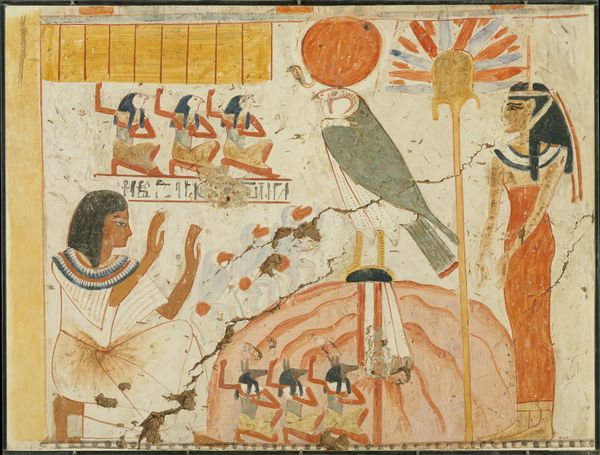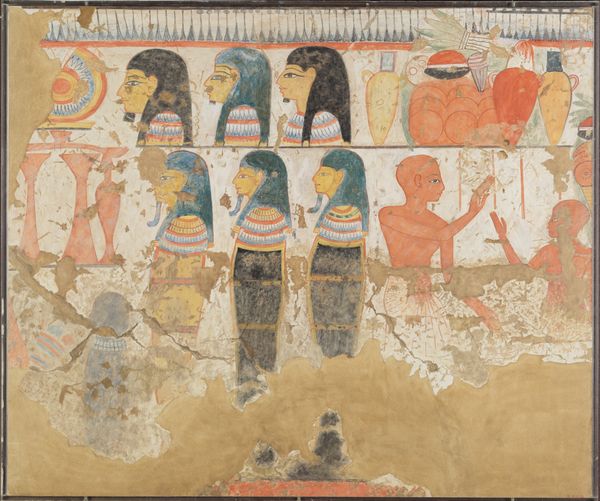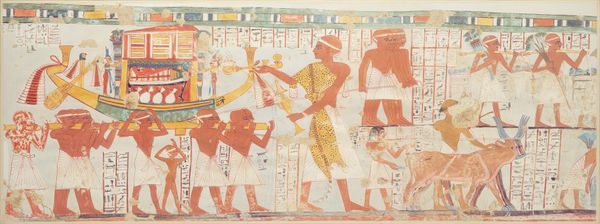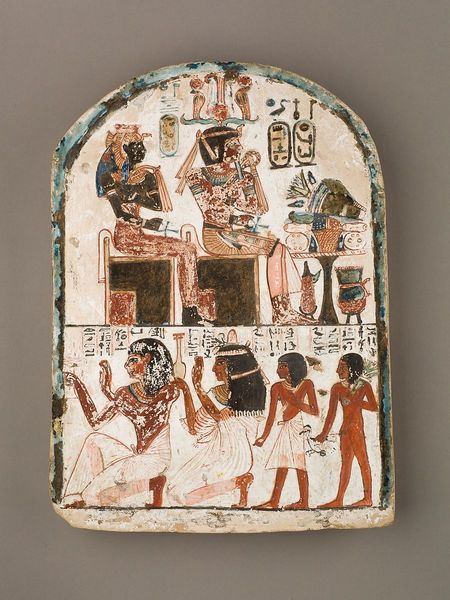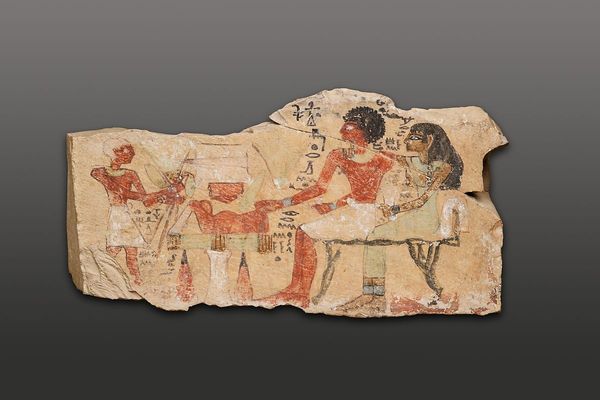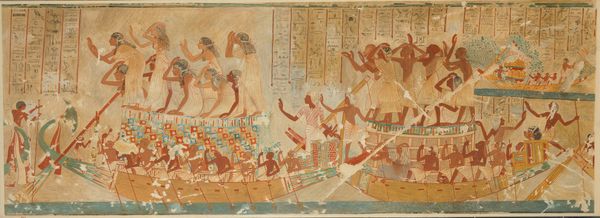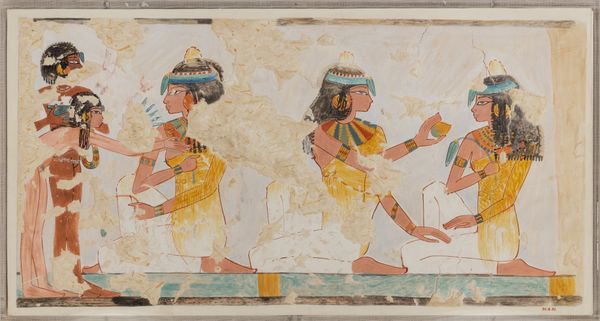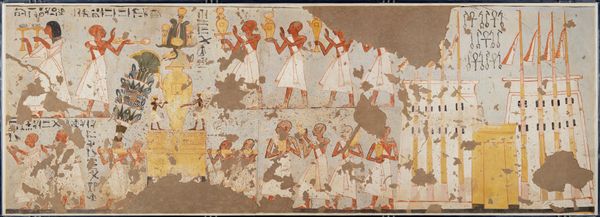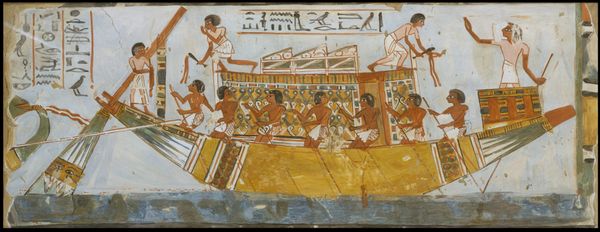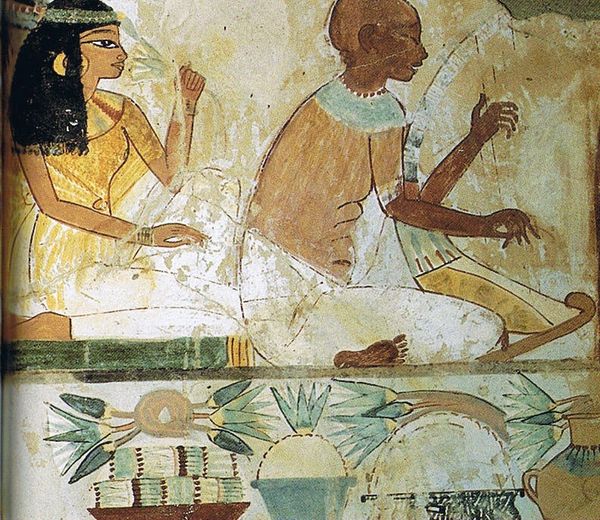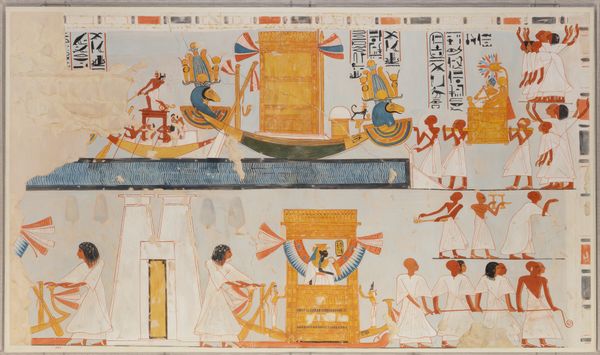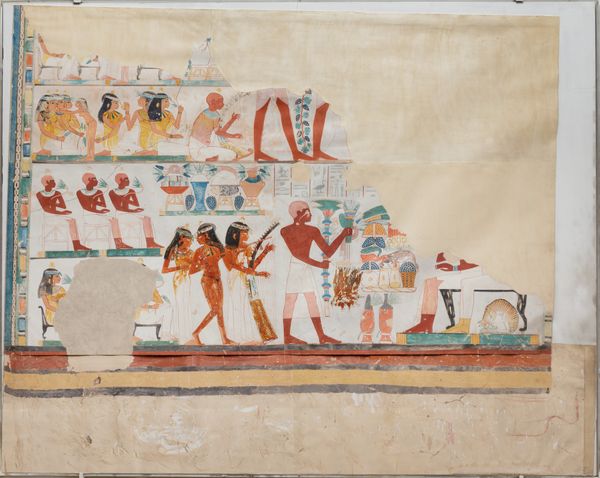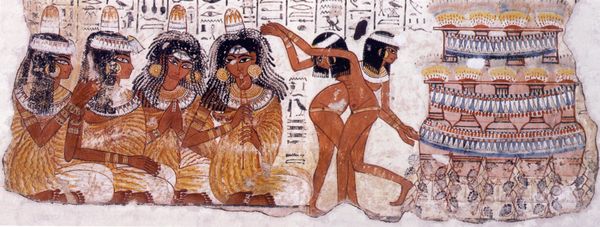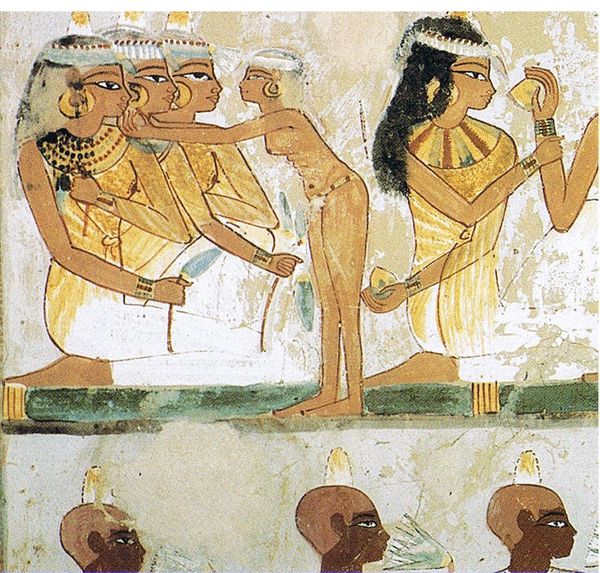
fresco
#
portrait
#
narrative-art
#
landscape
#
ancient-egyptian-art
#
fresco
#
ancient-mediterranean
Copyright: Public domain
Curator: Looking at this vibrant fragment, known as the "Hunt Between Papyri" from the Tomb of Nebamun, painted circa 1295 BC, what's your immediate take? Editor: The riot of colors immediately strikes me! There's a dynamism in the representation of the figures amidst the papyrus that’s really captivating. And given the scale and complexity of this, what would it be like to be in such a tomb with more murals of the era. Curator: It is fascinating to consider its original environment. What intrigues me is how the materials—the pigments sourced for the fresco, the very technique of layering paint on the plaster walls—speaks volumes about the resources available and the skill of the artisans involved in its making. The lapis lazuli, for instance, imported from distant lands for the blues, signifies luxury. Editor: Absolutely. But think too of the image itself—the elite, represented by Nebamun, engaging in this carefully staged hunt in the afterlife. It speaks of power, of course, but also about the ways the ruling class shaped their public image for eternity, quite literally! What the patron paid for dictated how they want us to view it. Curator: Precisely! We must also note that it is not merely an image of recreation, it is a narrative imbued with cultural meaning. Hunting wasn't just a sport; it was a symbolic act, affirming Nebamun's control over nature, over chaos itself, in his eternal life. Look at how the plants were placed next to each other in relation to where his foot touches. The placement has purpose, I assume, correct? Editor: Certainly. These tomb paintings weren’t made in isolation. Workshops and guilds of artists were responsible. Consider also how these images would reinforce hierarchies – Nebamun at the center, his lesser attendants rendered on a smaller scale. How his placement reinforces how he needs to be portrayed. Curator: The politics of representation are, indeed, paramount here. Examining the materiality helps uncover who was behind its creation, what they knew, and the socio-economic relations at play, with a particular lens. Editor: And for a long time these served as documents and as forms of preservation as opposed to sources of social commentary on wealth or control. Museums' framing of artifacts influences the way culture will interpret such an ancient civilization for future generations. Curator: Agreed, seeing through those layers can change how you view pieces like these. Editor: Yes, "Hunt Between Papyri" can make us reflect about labor, artistic skills, political motivations and public perception throughout its existence, rather than solely admire.
Comments
No comments
Be the first to comment and join the conversation on the ultimate creative platform.
